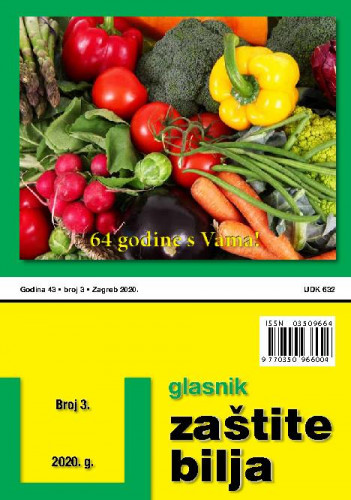Izbor kvasca za proizvodnju žitnog destilata može značajno utjecati na randman i koncentraciju etanola te konačnu kvalitetu proizvoda. Cilj rada bio je ispitati utjecaj dvije različite vrste kvasaca iz roda Saccharomyces na kvalitetu destilata dobivenog dvostrukom destilacijom fermentirane ječmene sladovine na jednostavnom destilacijskom uređaju. Korištena su dva kvasca, Saccharomyces cerevisiae komercijalnog naziva FERMOALE AY4, te kvasac Saccharomyces cerevisiae (ex. bayanus) komercijalnog naziva EC1118. Kemijskom analizom utvrđeno je kako je primjenom kvasca AY4 postignuta bolja iskoristivost šećera iz ječmene sladovine (3 % više etanola) i niža titracijska kiselost destilata. Plinskom kromatografijom utvrđene su koncentracije acetaldehida u oba uzorka iznad uobičajenih, pa je u uzorku destilata dobivenog korištenjem kvasca AY4 determinirano 274 mg L-1 a.a., a u uzorku dobivenom sa kvascem EC1118, 356 mg L-1 a.a. Nadalje, koncentracije viših alkohola u oba su uzorka bile iznad uobičajenih. U uzorku destilata AY4 determinirano je 2179 mg L-1 a.a, dok uzorak destilata EC1118 zbog determiniranih 3602 mg L-1 a.a. ukupnih viših alkohola ulazi u kategoriju destilata niže kvalitete. Uzorak destilata EC1118 bio je bogatiji etil acetatom, dok je uzorak destilata AY4 imao više koncentracije ostalih estera što je rezultiralo kompleksnijom aromom i punijim okusom destilata AY4.; The choice of yeast in cereal spirit production can greatly affect ethanol yield, as well as final product quality. The aim of this study was to evaluate the effect of two different yeast on the quality of spirit produced by double distilling a fermented cereal wash on a simple still. Two yeasts were used, Saccharomyces cerevisiae FERMOALE AY4, and Saccharomyces cerevisiae (ex. bayanus) EC1118. Chemical analysis proved that yeast AY4, as expected, has a better ethanol yield (3 % more ethanol), lower titratable acidity, while ethyl acetate concentrations were slightly higher in sample EC1118. By gas chromatography analysis higher acetaldehyde concentrations than usual was identified in samples, in sample AY4 274 mg L-1 a.a., and 356 mg L-1 a.a. in sample EC1118 was determinated. Furthermore, larger amounts of higher alcohols were produced in both samples, sample AY4 contained 2179 mg L-1 a.a. while sample EC1118 with 3602 mg L-1 a.a. total higher alcohols enter the lesser quality spirit rank. While sample EC1118 was richer with ethyl acetate, sample AY4 had higher concentrations of other esters which made sample AY4 a distillate with more complex aroma and fuller flavour. Future experiments could yield interesting results if the fermentation conditions would match those in a distillery.
Sažetak

 Glasnik zaštite bilja : 43,3(2020) / glavni urednik Katarina Lučić.
Glasnik zaštite bilja : 43,3(2020) / glavni urednik Katarina Lučić.